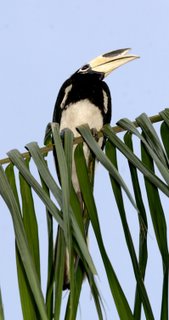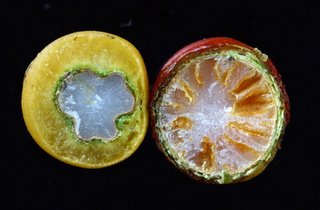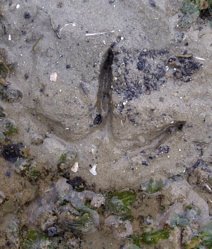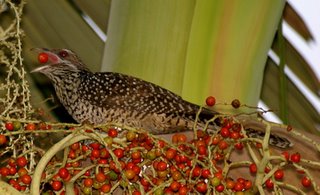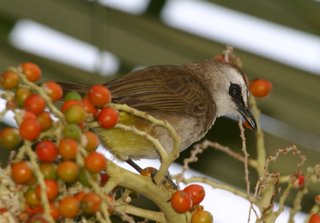Of termites and toads
Reading Subaraj’s posting on Termite Hatch reminds me that only about a week ago I was trying to explain the same phenomenon to my three year old daughter when we were at the carpark opposite Downtown East at sunset. A flock of House Crows (Corvus splendens) and Javan Mynas (Acridotheres javanicus) was feasting on a termite hatch. A couple of bats also arrived when it got a little bit darker.
Managed to catch one of the 2 cm long termites to show my daughter as it flew past. When I showed it to her, the two pairs of long wings simply dropped off. All my daughter could manage was. “...what happen to the wings? Gone already!"
The sight of those termites sends shivers down my spine. Why? In 1992 I was posted to an old camp in Seletar. We were doing guard duty that night after a heavy downpour and the termites decided to have a nuptial flight.
Initially it was bearable. A few of them were simply fluttering about around the lights. But later, we got a taste of what the Egyptians might have endured in biblical times. The lights were almost blocked out by the hoards, we had to turn off the standing fan because the metal cage around it was almost stuck full of the termites and it was splattering chewed up termites at us. Looked as if someone took a bottle of mayonnaise and decided to decorate the floor around it.
 Many of them quickly lost their wings and were all over us and everywhere else. It was actually raining termites. Then the toads appeared in numbers that I have never seen in my life. Almost one toad per square meter at the peak. They were all over the car park and they didn't even have to try catching the termites. They would have been stuffed if they just fed on those termites that were crawling on their bodies.
Many of them quickly lost their wings and were all over us and everywhere else. It was actually raining termites. Then the toads appeared in numbers that I have never seen in my life. Almost one toad per square meter at the peak. They were all over the car park and they didn't even have to try catching the termites. They would have been stuffed if they just fed on those termites that were crawling on their bodies.By about 10 pm, the activity died down. Most of the termites found a quiet spot to congregate. A few toads were still having supper. But we still had to contend with termites getting into our clothes when we went to sleep.
The next morning, when the guards were sweeping up the floor, the heaps of wings that piled up were really a sight to behold. Normally it is the tiny leaflets of the rain tree (Samanea saman) that form the heaps. But not that day! We may not have cherry blossoms (Prunus sp.) here in Singapore, but when the wind blew, the swirling detached wings had a similar effect.
Up till today, whenever I see a termite swarm, it still sends the shivers down my spine and I think of those frantic 2 cm long termites running beneath our army uniforms.
Contributed by Jeremy Lee, image by YC.
Labels: Feeding



